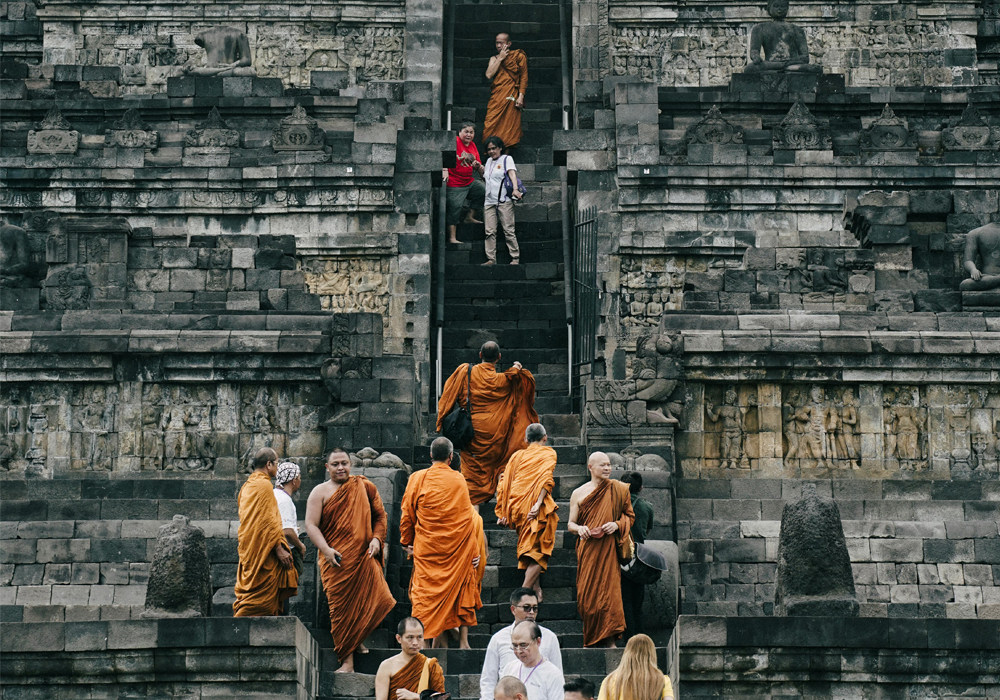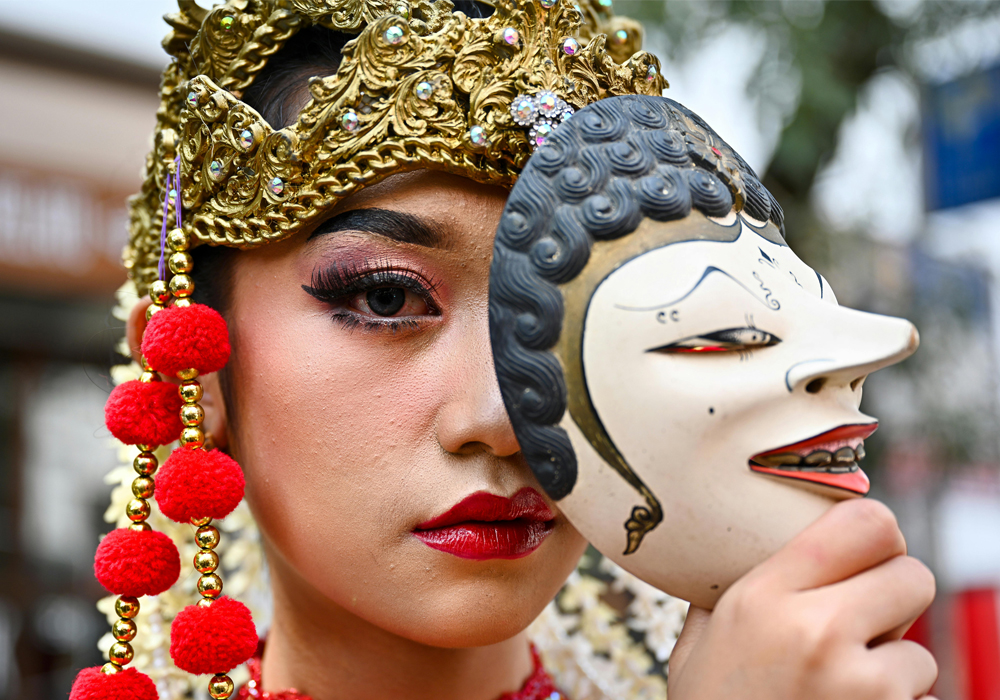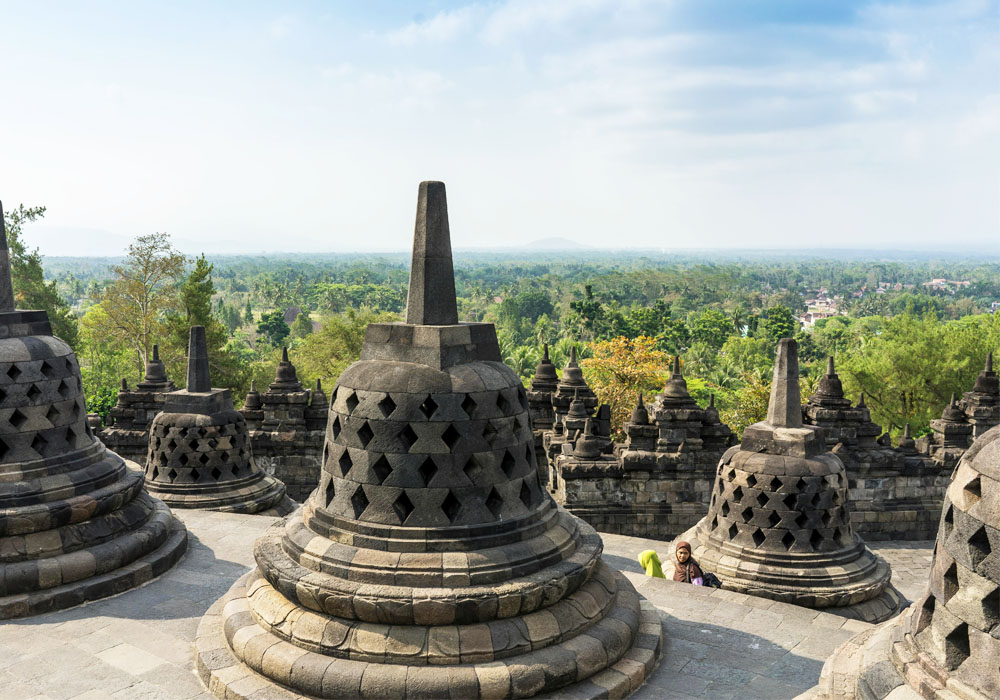Let’s be honest, if Indonesia were a family dinner, the Javanese People would be the calm, slightly mysterious uncle who sits at the head of the table, offering pearls of ancient wisdom (or just politely passing the rice).
They are, without a doubt, the undisputed heavyweights of the Indonesian demographic scene, and their culture is the rich, complex spice blend that gives the nation much of its unique flavour.
The Great Ancestral Road Trip: Where Did They Come From?
So, where do the Javanese people hail from? The short answer is: Java. The long answer is a fascinating journey that mixes history, archaeology, and a dash of wayang (shadow puppet) storytelling flair.
Forget Noah’s Ark; the Javanese origin story is more like an ancient, slow-motion migration that probably involved very sturdy boats and a lot of patience.

Academically speaking, the Javanese, like most inhabitants of the Indonesian archipelago, are generally believed to be descendants of the Austronesian peoples who migrated from mainland Asia (likely from Taiwan and the Philippines) in successive waves, arriving in what is now Java thousands of years ago.
Imagine a massive, unhurried continental drift of people carrying their language, their love for intricate patterns, and their future obsession with batik. They settled, they farmed, and crucially, they built some truly magnificent empires.
But wait, there’s a fun local legend! Some Javanese traditions tell of ancestors who arrived after the island was “stabilized” by gods or legendary figures.
One version holds that the island was originally barren and unstable until the gods decided to move a part of Mount Meru (the mythical mountain in Hindu cosmology) from India to Java.
They planted it right in the middle, and voilà: Java was firm, fertile, and ready for people. Think of it as ancient divine landscaping—a very dramatic makeover!
Culture: The Fine Art of Being Subtly Fabulous
Javanese culture is a masterpiece of subtlety, politeness, and high art. If a Javanese person tells you something is “not bad,” it probably means it’s the most exquisite thing they have ever experienced.
The Holy Trinity of Javanese Culture:
- Batik: This is not just a cloth; it’s a philosophy, a historical record, and a serious commitment to wax and dye. Wearing Batik is the Javanese equivalent of putting on your power suit. It’s elegant, detailed, and utterly non-negotiable for formal events. The intricate patterns often tell stories—so next time you see someone in a Parang (sword-like pattern) batik, know they’re symbolically channeling the strength of ancient kings.
- Gamelan: Forget your electric guitars and booming bass. The Gamelan orchestra is a symphony of bronze, rhythm, and tranquility. It’s music designed to soothe the soul, accompany ritual dances, and remind you that maybe the secret to a good life is just a very well-tuned gong. It’s mesmerizingly complex, yet always sounds incredibly chill.
- Krama (High Javanese): The language itself is a social ladder. Speaking Ngoko (low Javanese) to an elder or a superior is a social blunder of epic proportions. You must use Krama (high Javanese), a language so polite it practically bows before it addresses you. It’s the ultimate linguistic demonstration of unggah-ungguh (etiquette). Mastering this is like achieving a black belt in politeness.
The Big Numbers: Are They Really the Majority?
Yes. Oh, dear lord, yes. The Javanese are the quintessential majority group in Indonesia.
The Demographics: While exact figures fluctuate with every census, the Javanese people consistently represent the largest ethnic group in Indonesia. They make up around 40% of the country’s total population.

To put this in perspective: If you randomly picked five Indonesians, statistically, two of them would likely be Javanese. They are the bedrock of the nation’s demographics, which is why their culture and language have such a pervasive influence across the archipelago, especially in government, music, and the arts.
Their sheer numbers are why Java itself is one of the most densely populated islands on Earth—a true testament to their ability to live cheek-by-jowl while maintaining their serene demeanor.
Characteristics and Behavior: The Art of Smooth Sailing
If you want to understand the Javanese mindset, you need to understand two key concepts: Aja dumeh and Alon-alon waton kelakon.
- Aja dumeh (Don’t be arrogant/Don’t forget yourself): This is the Javanese version of a constant internal humility check. Even if you’re rich, powerful, or wildly successful, you must maintain a low profile and avoid showing off. Boasting is the cultural equivalent of wearing socks with sandals to a royal wedding.
- Alon-alon waton kelakon (Slowly, slowly, as long as the goal is achieved): This is the Javanese work ethic motto. It doesn’t mean they’re lazy; it means they value precision, thoroughness, and avoiding stress over rushing. Why sprint to the finish line and mess up, when you can take a stately stroll and arrive perfectly? This explains their legendary patience and calm under pressure.
Their communication style is often indirect. If they disagree with you, they might say, “Well, that’s an interesting perspective,” and then subtly change the subject forever. Direct confrontation is avoided like a bad case of the flu. Everything is handled with halus (refinement) and runtut (orderliness).
Decision Making: Leaders, Imams, and the Spirit of Musyawarah
Do the Javanese blindly follow an Imam or a secular leader in their decision-making? The answer is a subtle, polite, Javanese-style “it’s complicated.”
The Javanese societal structure values harmony above all. Individual decision-making is often filtered through the lens of family and community well-being. Historically, their decisions, especially in village life, were governed by the principle of Musyawarah dan Mufakat (Deliberation and Consensus).
This is the ancient Javanese (and Indonesian) version of a high-stakes group project: everyone talks, debates (politely, of course), and keeps going until everyone can agree on a consensus (mufakat). No one wins; everyone harmonizes.
Regarding religious leaders (Imams or Kyais), their influence is certainly strong, especially in rural areas, acting as moral and ethical guides. However, it’s not a dictatorship. The traditional Javanese worldview is an eclectic blend of Islamic, Hindu-Buddhist, and animistic beliefs known as Kejawen.
This philosophical framework emphasizes inner peace, selamet (safety/well-being), and spiritual balance. A Javanese person will seek guidance from their religious leader, but they will also consult their family elders, and perhaps quietly check their own inner spiritual compass (the roso sejati) before making a major life move. They trust their leaders, but they trust their own inner calm even more.
Mythology: Kings, Spirits, and the South Sea Queen
Javanese mythology is where the real fun begins. It’s a glorious mash-up of Hindu epics, local spirits, and powerful queens.
The most famous figure is undoubtedly Nyi Roro Kidul, the legendary Queen of the Southern Sea (Indian Ocean). She is not a benevolent mermaid; she is a powerful, beautiful, and terrifying spirit queen who rules the underwater palace.
Legend says she has a penchant for handsome men, especially those who wear green near the South Sea, which is why many coastal Javanese avoid that color near the ocean—lest they become her next, non-consensual court member.
She embodies the unpredictable, beautiful, and dangerous power of the ocean, and Javanese royalty have often claimed her as a spiritual consort to legitimize their own power.
Other key figures are the Dewa (Hindu-Buddhist gods and deities), Jin (genies or spirits), and the Danyang (local village protectors). Every Javanese region, and often every large tree or ancient grave, has its Danyang that must be respected and offered a polite, occasional offering (a small plate of rice or a flower).
In essence, the Javanese people have built a culture that is deep, layered, endlessly polite, and powered by a love for art and a profound commitment to avoiding drama.
They are the quiet giants of Indonesia, masters of the understated gesture, and proof that you can run a nation (or at least, a significant chunk of it) while still prioritizing your inner peace.
